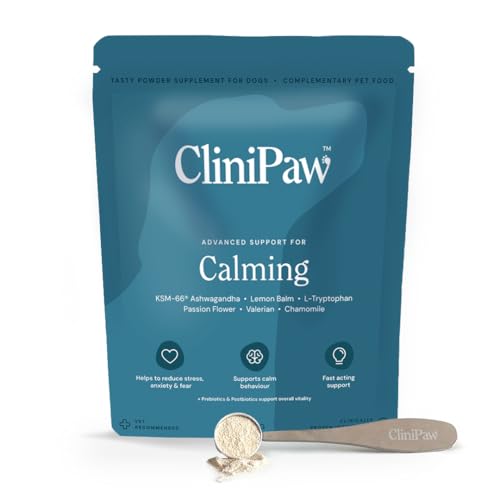








It’s crucial to observe that the excrement of a female pooch can exhibit noticeable alterations during her reproductive cycle. During this period, hormonal fluctuations can influence digestion, which may lead to variations in texture and odour. If you notice your furry friend’s droppings appearing softer or having a stronger scent, it may be related to these hormonal shifts.
Pay close attention to her eating habits. A decrease in appetite is common, which can directly impact the consistency of her waste. If she’s munching less, the volume of faeces produced will likely diminish, and you might find that her stools are smaller and more compact. Keeping track of her dietary intake during this phase can provide valuable insights into her overall health.
Furthermore, ensure that she remains hydrated. Changes in fluid intake can also affect the characteristics of her output. If her drinking habits fluctuate, it could lead to dehydration, resulting in harder stools or, conversely, looser waste. Always provide fresh water and monitor her intake closely.
In summary, monitoring the changes in your pet’s droppings during her cycle can offer vital clues about her health. If you observe persistent abnormalities or signs of distress, consulting with a veterinarian is advisable to rule out any underlying issues.
Changes in Waste During Estrus
During estrus, alterations in excrement can occur due to hormonal fluctuations. Increased progesterone can lead to variations in digestion and nutrient absorption. This might result in firmer or softer stools depending on the individual. It’s crucial to monitor these changes closely, as they can indicate overall health.
Signs to Watch For
Pay attention to the consistency and frequency of bowel movements. If you notice significant shifts–such as prolonged diarrhoea or constipation–consider consulting a veterinarian. Changes in appetite may also influence waste characteristics. A decreased appetite can lead to less frequent eliminations.
Nutritional Impact
Diet plays a pivotal role during this phase. Ensure the nutrition provided supports digestive health. Incorporating fibre-rich foods can help maintain regularity. Additionally, hydration is key; make sure fresh water is always available to aid digestion and prevent complications.
Understanding Hormonal Changes and Their Impact on Digestion
Monitor your canine’s eating habits closely during hormonal shifts. Increased or decreased appetite often correlates with these changes. Maintaining a consistent feeding schedule is crucial; it helps regulate their digestive system.
Changes in hormone levels can lead to variations in digestion. Some canines may experience gastrointestinal upset, resulting in softer stools or even diarrhoea. It’s wise to introduce any dietary adjustments gradually to prevent exacerbating these issues.
Hydration is key. Ensure your furry friend has constant access to fresh water, especially if they show signs of digestive distress. Dehydration can worsen the situation and lead to more severe health concerns.
| Hormonal Change | Potential Digestive Impact | Recommendations |
|---|---|---|
| Increased Estrogen | Possible appetite increase, softer stools | Adjust food portions gradually, monitor stool consistency |
| Decreased Estrogen | Potential loss of appetite, firmer stools | Maintain regular feeding schedule, consider palatable food options |
| Progesterone Surge | Gastrointestinal upset, possible bloating | Introduce a bland diet temporarily, ensure hydration |
Always consult your veterinarian if you notice persistent changes. They can provide tailored advice based on your pet’s specific needs and health conditions. Keeping a close watch on their behaviour and health is essential during these phases.
Identifying Changes in Stool Consistency and Colour
During the cycle of a female canine, observing variations in the consistency and hue of excrement can be revealing. It’s common to notice a softer texture, which may be attributed to hormonal fluctuations affecting the digestive system. If the stool appears looser than usual, this could indicate an adjustment in diet or stress levels. Keeping track of these changes can help in identifying underlying issues.
Consistency Observations
Typically, healthy droppings are firm and segmented. However, during this period, you might find a more mushy consistency. If the texture becomes too watery or persists beyond the cycle, it’s advisable to consult a veterinarian.
Colour Variations
Colour can also shift, ranging from brown to lighter shades. This could be due to alterations in food intake or digestive processes. A significant change to a pale or greyish colour can indicate health concerns and should prompt a visit to the vet.
Monitoring these aspects can help ensure your pet remains healthy. For a quick clean-up solution, consider using a best budget electric pressure washer for outdoor messes, making the maintenance of your space easier during these times.
How to Manage Your Pet’s Bathroom Routine During Estrus
Adjusting the bathroom schedule is key during this period. Take notice of your companion’s increased need for outdoor breaks. Plan for shorter, more frequent walks to accommodate her needs comfortably. This not only helps prevent accidents indoors but also reduces stress for both of you.
Monitoring Hydration and Diet
Maintain a close watch on her water intake. Increased hydration can lead to more frequent bathroom visits. If you notice changes in her consumption, adjust the feeding schedule accordingly. Stick to her regular diet, but consider adding fibre-rich foods to promote smoother digestion. Keep an eye on her reactions to any dietary changes.
Creating a Calm Environment
During this time, your furry friend may feel anxious. Establishing a quiet space for her can ease her stress, making bathroom breaks more manageable. Use familiar scents, such as her bedding or favourite toys, to create a soothing atmosphere. Keep an eye on her behaviour; if she seems restless, a calming supplement may help.
Always be patient and attentive. This period can be challenging, but staying observant of her needs will make a significant difference in managing her routine effectively.
When to Consult a Veterinarian About Stool Changes
If you observe any significant alterations in your pet’s waste, it’s crucial to seek veterinary advice. Here are key signs that warrant a consultation:
- Persistent diarrhoea lasting more than 24 hours.
- Stool that is excessively hard or difficult to pass.
- Presence of blood, mucus, or unusual colouration.
- Accompanying symptoms such as vomiting, lethargy, or loss of appetite.
- Sudden changes in frequency or habits, especially if they seem uncomfortable.
Monitoring Dietary Impact
Diet plays a significant role in bowel health. If you’ve recently changed your pet’s food and notice irregularities, consider reverting to their previous diet temporarily. You might also explore options like the best dog food to reduce pooh to manage waste better. Always consult your vet before making dietary adjustments.
Behavioural Changes
Pay attention to any shifts in behaviour. Increased urgency or reluctance to relieve themselves can indicate an underlying issue. Contact your veterinarian if you notice these changes, as they can help determine if there’s a medical concern that needs addressing.
FAQ:
Does a dog’s poop change in consistency during heat?
Yes, a dog’s poop can change in consistency during her heat cycle. Hormonal fluctuations can affect digestion and metabolism, sometimes leading to softer stools or even diarrhea. It’s crucial for pet owners to monitor their dog’s bathroom habits during this period to ensure there are no underlying health issues.
What colour might a dog’s poop be when she is in heat?
The colour of a dog’s poop during heat can vary, but it should generally remain within the normal brown spectrum. However, if you notice unusual colours such as red or black, it could indicate a health issue that requires veterinary attention. It’s always good to observe any changes and consult a vet if you have concerns.
Can being in heat cause a dog to have more frequent bowel movements?
Some dogs may experience changes in their bowel habits during heat, including more frequent bowel movements. This can be linked to hormonal changes and increased anxiety or stress. If the frequency is significantly higher than usual or if there are other concerning symptoms, a visit to the vet is advisable.
Is it normal for a dog’s poop to smell different during her heat cycle?
Yes, it is possible for a dog’s poop to have a different odour during her heat cycle. Hormonal changes can alter the scent of her faeces. While a slight change in smell can be normal, any foul odour or other signs of distress should prompt a consultation with a veterinarian.
What should I do if my dog has diarrhoea while in heat?
If your dog experiences diarrhoea during her heat cycle, it is important to monitor her closely. Ensure she stays hydrated and consider withholding food for a short period. If the diarrhoea persists for more than a day or is accompanied by other symptoms like vomiting or lethargy, you should seek veterinary care to rule out any serious conditions.








